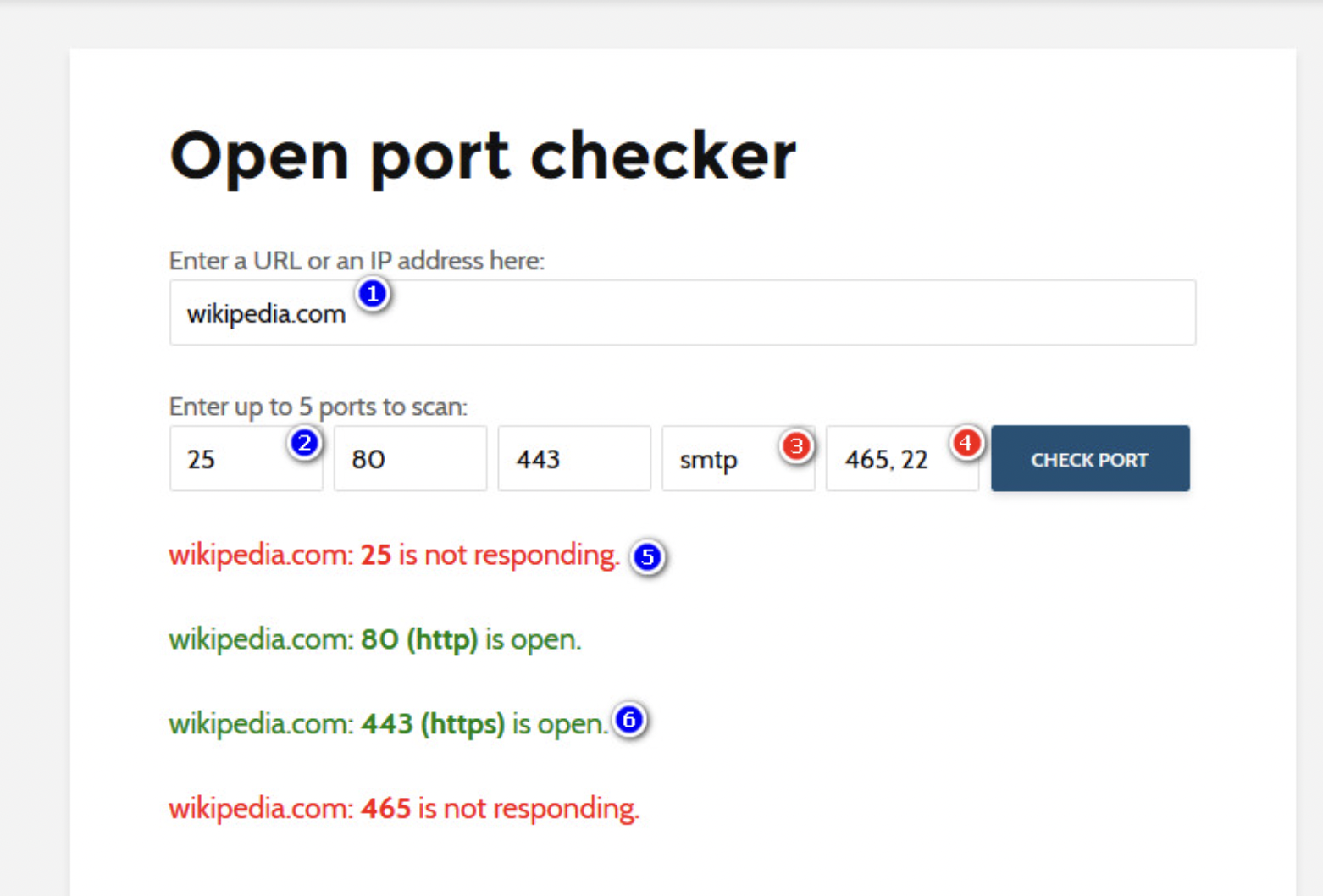Easy Navigation
Port checker tool introduction:
A Port Checker is a free online tool that is used to check a remote computer or equipment available from the Internet, also called a port scanner. It supports checking the onward setting of the port like if a port is jammed or faces any other linking issue by a firewall. It also protects your computer from any annoying open ports.
What about the port?
A Port is an essential point where a linkage association can start and end. It’s accomplished by a computer functioning system and starts with a precise provision or process. It’s used to discriminate between different categories of traffic.
A port is a rational concept that looks like a definite practice or network service. There are only two plain ports that are called Transmission Control Protocol (TCP) and User Datagram Protocol (UDP).
Define the port number?
A figure is allotted to each port, that defines that ports are consistent and espoused through all the network-connected devices. Frequently each port is earmarked for helping a particular protocol. For example, all Simple Mail Transfer Protocol (SMTP) messages go to port 25.
Those statistics are 16-bit unspecified numbers that are recognized. The number is a mixture of its protocol and address. Famous and registered are the two ranges of port numbers.
Types of ports:
There are two categories of ports:
Open ports:
It’s the port that can consent to the sachets of info in network communication. That port also desires to have a claim aligned on it.
Closed ports:
It’s a port that discards links or snubs any packs that are next to it. Due to the firewall, a port can be closed.
What is the role of the port in making network connections?
Port checkers help in data transfer from one computer to another. We can practice various appeals on the same Wi-Fi system due to the various functionality structures of this process. There are also attached firewalls that make you more secure and deny or allow network circulation based on definite arrangements of rules. It tells us the differences b/w reliable and untrusted laws.
What is a port scanner?
A Port scanner device is used to classify accessible services on a server. It practices rare IP packs to catch out which ports are undefended on a server or what Working System is organized or to check if a server has a firewall assisted, etc. The facility can also notice the uptime of a crowd if the crowd is in a row one of the recognized Operating Systems through which we can analyze and scan.
Steps that you need to follow for port scanning?
We need to follow the steps that are given below,
- Open the port checker tool
- We already have a list of defined ports there we will add a domain or IP address, will press enter, and accept the request
- Check the custom ports for the outsider request
- The Port scanner will tell you whether the port is open or blocked (its means not identifiable at this time)
What’s the reason to run a port scanner?
To avoid the open ports from the exterior spasms on your IP. Some kind of clients can do a malicious movement that they can identify your password. In port checker, they can get to the entrance without any hesitation. The muggers search an extensive choice of IPs and request them on altered ports to check susceptibility to attack. Therefore, all the time it’s superior to retain those ports open that you consider are fortified by your Software or Hardware, Firewall, or an Antivirus program.
Frequently Asked Questions:
Is the port Checker safe?
Though port scanners are capable of discovering security risks. It’s a legacy security control. For the most reliable exposure detection, an attack surface monitoring solution like Up Guard should be implemented.
Is port scanning illegal?
In the U.S., no federal law exists to ban port scanning.
How can I tell if a network device is blocking a port number?
Check for Blocked Port using the Command Prompt
- Type CMD in the search bar.
- Right-click on the Command Prompt and select Run as Administrator.
- In the command prompt, type the following command “netsh firewall show state” and hit enter.
- This will display all the blocked and active ports configured in the firewall.
How many ports are available per IP address?
TCP and UDP each support 65,536 ports per IP address, but Cloud NAT doesn’t use the first 1,024 well-known (privileged) ports.
Can multiple devices use the same port?
No; when you forward a port you send all traffic to a single address. If you need 2 devices to receive the data on the same port then you need to forward it to a single device that connects those 2 additional devices to the network
Meta description:
We can use the port checker to check the IP address and detect if the port is open or not. Through this, we can also check the port forwarding setting.
